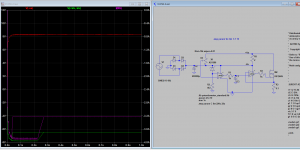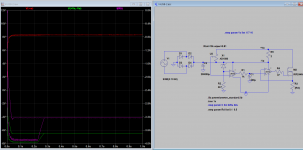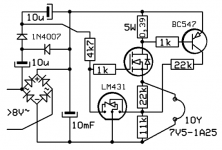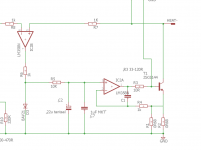Hi.
In my VT25 I'm using these filament supply.
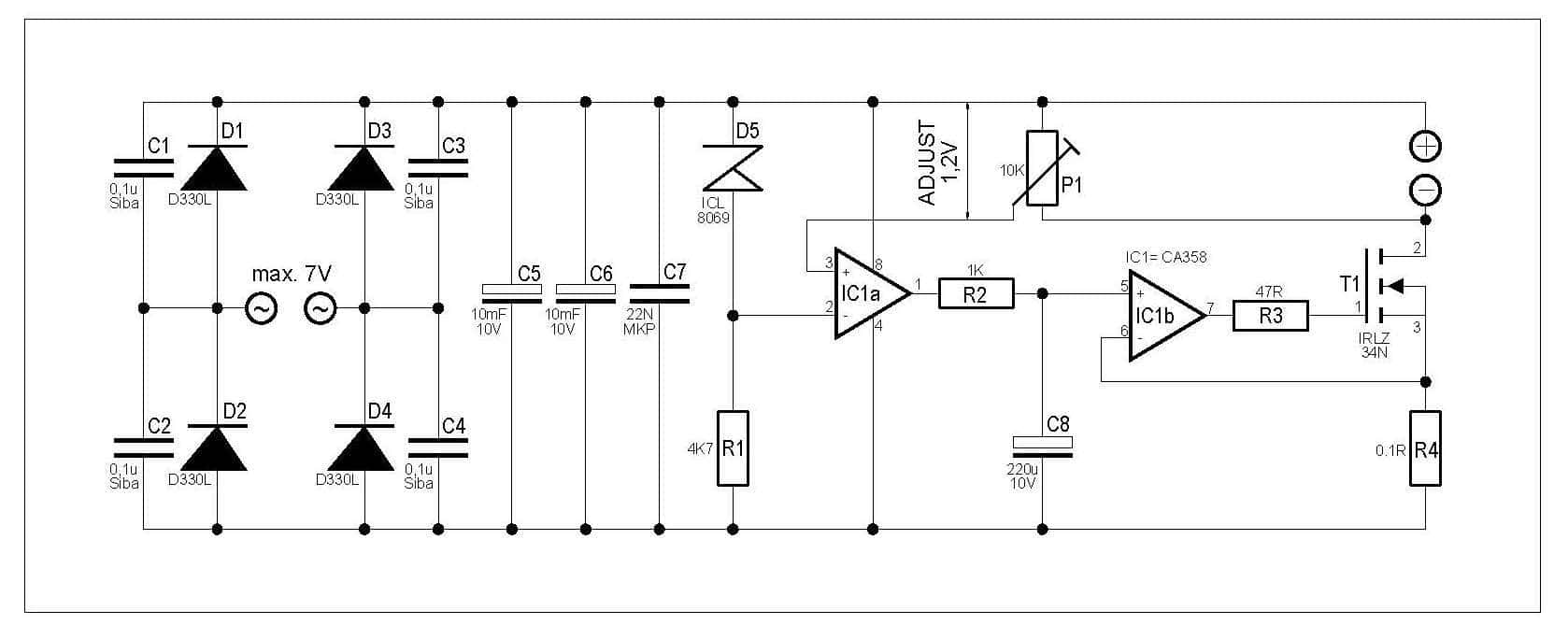
Problem is when I turn on preamp for 1 second I have big glow from valves.
I tried to measure output voltage from filament regulators and it is around 10V for couple of second and then goes to 7.5V.
I'm suspecting problem is low resistance of filament when they are cold.
I never had that problem with these regulators when I used 300B tubes, only with VT25.
I'm just afraid that these tubes filaments will break eventually because of that.
Is there any way to edit this schematics to have slow start?
In my VT25 I'm using these filament supply.

Problem is when I turn on preamp for 1 second I have big glow from valves.
I tried to measure output voltage from filament regulators and it is around 10V for couple of second and then goes to 7.5V.
I'm suspecting problem is low resistance of filament when they are cold.
I never had that problem with these regulators when I used 300B tubes, only with VT25.
I'm just afraid that these tubes filaments will break eventually because of that.
Is there any way to edit this schematics to have slow start?
IMHO the worst scenario heating TT (thoriated tungsten) filament with constant voltage.
Thoriated Tungsten Filament power cycling
Why not use any constant current device (the simplest is made for LT108x) for slower heating (even in combination with any voltage regulation)?
BTW I usually use Rod Coleman regulators for DH tubes.
Rare DHTs (such 01a, #26, 10, 801 etc.) are expensive toys, protect of filaments is cheaper.
Thoriated Tungsten Filament power cycling
Why not use any constant current device (the simplest is made for LT108x) for slower heating (even in combination with any voltage regulation)?
BTW I usually use Rod Coleman regulators for DH tubes.
Rare DHTs (such 01a, #26, 10, 801 etc.) are expensive toys, protect of filaments is cheaper.
I wanted to avoid bulk power supply and heatsinks for Coleman regulators.
Wanted simple elegant solution and I already had these regulators.
I would like to keep them so modification of current schematics will be the best if it's possible.
Wanted simple elegant solution and I already had these regulators.
I would like to keep them so modification of current schematics will be the best if it's possible.
put NTC in line , prior C bank
I already tried NTC after regulator but that didn't work.
I will try to put prior C bank 😉
I just tried NTC before C bank and it works but there are two problems.
First it need long time (around 1 min) to get to 7.5V.
Second NTC is very hot. I tried two NTC in parallel it is little better but still hot.
I'm using NTC 10D-20.
First it need long time (around 1 min) to get to 7.5V.
Second NTC is very hot. I tried two NTC in parallel it is little better but still hot.
I'm using NTC 10D-20.
Can we add some transistor and capacitor to form soft start?
Something like this to implement in my above schematic?
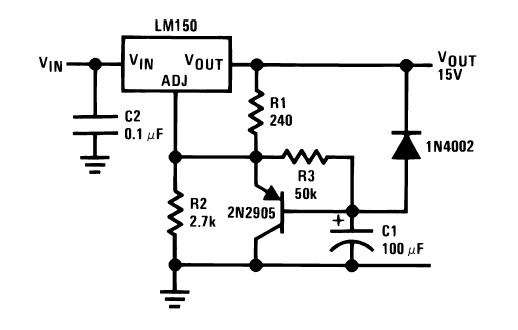
Something like this to implement in my above schematic?

1 minute for full filament voltage is excellent for DHT.
But be very careful, B+ should not be faster than filament voltage.
Pozdrav
But be very careful, B+ should not be faster than filament voltage.
Pozdrav
The time constant of R2/C8 is about 0.5s, so if C8 is reduced to 22u, it's reduced to 0.05s. i.e. making it faster for device to regulate, time of 10V out will be shorten to 0.05s from 0.5s
Attachments
Last edited:
be careful not to get oscillations , altering that capacitor value
I had , with same circuit ........ but mine was a mess and IC certainly had tough childhood
NTC of 3-5R will do the job
it's in nature of NTC to become hot , or it will be regular resistor
besides that , connecting NTCs in series is normal thing , while connecting them in parallel is no-no thing
I had , with same circuit ........ but mine was a mess and IC certainly had tough childhood
NTC of 3-5R will do the job
it's in nature of NTC to become hot , or it will be regular resistor
besides that , connecting NTCs in series is normal thing , while connecting them in parallel is no-no thing
Late to the party but its because the 220uF capacitor can charge faster than discharge. And once the filament warms up the constant current through a hot filament will cause the voltage to rise out of specification momentarily.
The solution is to clamp the output voltage from the voltage comparator to some low value with a diode, and run the RC filter from there.
The solution is to clamp the output voltage from the voltage comparator to some low value with a diode, and run the RC filter from there.
Attachments
Last edited:
- Home
- Amplifiers
- Tubes / Valves
- VT25/10Y filament help
